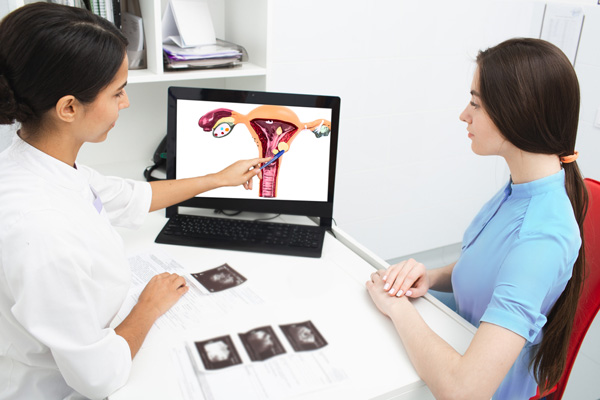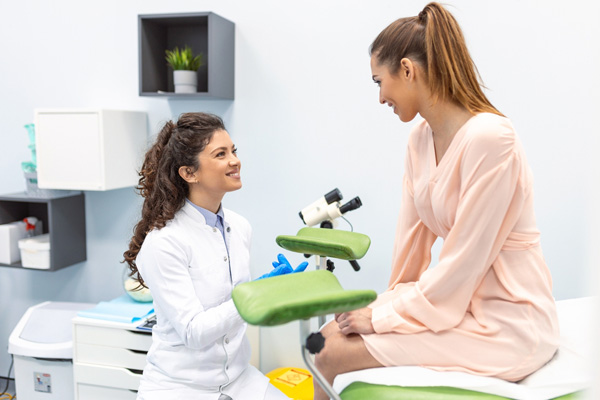Quick Guide to Gynecological Exams and Visits

Gynecological exams and visits give patients the best chance of staying healthy. During an exam, the doctor can identify anything of concern, followed by providing the appropriate treatment.
Types of exams
One of the first things a patient should do is to talk to their OBGYN about the different types of required examinations.
Although there are various gynecological exams, the following are the most common.
1. Pap smear
With a Pap smear, an OBGYN collects cells from inside the cervix. Using a tool that scrapes the sides of the walls, they can get a sample for laboratory testing. The doctor performs this examination in their office. As for the Pap smear itself, it takes only a couple of minutes and causes no pain.
The sample taken is then analyzed at a laboratory. The purpose is to confirm whether the cells are normal, precancerous or cancerous. Depending on the outcome of the test, the OBGYN will determine the correct treatment, if any.
2. HPV testing
Testing for HPV is another type of gynecological examination. This test checks for the presence of human papillomavirus. Usually, an OBGYN will perform this test at the same time as a Pap smear. This sexually transmitted disease is quite common. In fact, there is a good chance that anyone with a sexually active life has had this infection at least once. Typically, this clears up in about two years without causing any symptoms.
3. General pelvic examination
This is yet another type of gynecological exam. With this, an OBGYN may or may not collect cell samples. For instance, if a patient has unusual pain, the doctor may simply look into the vagina to see if they note anything out of the ordinary. A pelvic examination can be also performed as part of confirming a pregnancy.
When should a patient see an OBGYN?
If a patient has any sudden change relating to the vaginal area, they should schedule an appointment for a gynecological checkup. However, there is also a schedule recommended by an OBGYN. When a patient has their first menstrual cycle, for example, it is common for a parent/guardian to take the child to the doctor, just to make sure everything is healthy.
Other than that, and barring any concerns, a patient should not need to schedule their first visit to an OBGYN until the age of 21. During that appointment, the doctor would perform all the initial testing: Pap smear, HPV and so on. Then, for patients between this age and 65, they should have regular testing done every five years.
Although a patient above the age of 65 may not need all the same gynecological testing done, they should still see an OBGYN on a regular basis. For one thing, they could still develop cervical cancer, although that is rare. Also, because of the potential for other issues, like prolapsed bladder or incontinence, patients need to discuss their gynecological schedule with their doctor.
Avoid reproductive health-related issues
To avoid a host of reproductive health-related problems, it is imperative that you have the proper gynecological exams done. You should also see your OBGYN according to the recommended schedule. For many health issues, including cancer, early detection is critical for receiving the proper treatment.
Request an appointment here: https://eckhardtobgyn.com or call Donald Eckhardt Jr., M.D. , Kari Eckhardt W.H.N.P., C.N.M. at (346) 201-4716 for an appointment in our Tomball office.
Check out what others are saying about our services on Yelp: Read our Yelp reviews.
Recent Posts
Most uterine fibroids are noncancerous, and many patients do not realize they have them. This often leaves patients confused about what could have caused their fibroids, while they also wonder what exactly fibroids are. An OB/GYN can provide clarification on a patient’s unique condition. However, in the meantime, an overview may help.Fibroids are muscular tumors…
Pap smears can be lifesaving, detecting precancerous cells and early-stage cervical cancer. While medical professionals routinely recommend this screening, many put off undergoing one. It is important, therefore, to note that healthcare providers do everything they can to improve patient comfort throughout the process. The goal is to empower patients to get these crucial routine…
Transitioning to menopause can be uncomfortable. Hot flashes are a symptom that can last for many years. At night, they are referred to as night sweats. Managing hot flashes is important if they are interrupting your daily activities. Here are some ways to manage hot flashes during menopause.Try to make lifestyle changes first before taking…
If you feel pain between your navel and groin, this is pelvic pain. It could be caused by urinary tract infection, STD or prostatitis. Prostatitis is an inflammation of your prostate. If you have pelvic pain, do not feel alone. Many men suffer from this problem throughout the world.Pelvic pain can sometimes happen with other…


